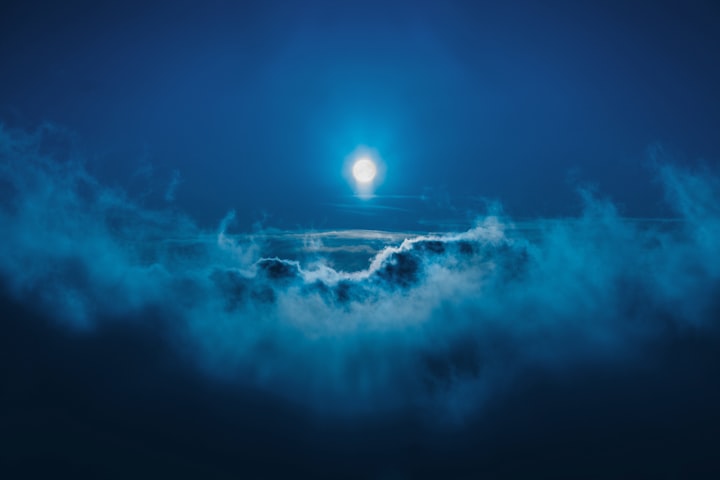Witnessing the Celestial Spectacle
The Super Blue Moon and Saturn's Close Encounter

Introduction: A Celestial Event of Rare Beauty
Prepare to be enchanted by a breathtaking astronomical phenomenon that will grace our skies – the Super Blue Moon, accompanied by the radiant presence of Saturn. Scheduled to appear on August 30th and 31st, this celestial marvel combines two intriguing lunar occurrences: the Super Moon and the Blue Moon. This year's Super Blue Moon, set against the backdrop of Saturn's brilliance, holds special significance as the ringed planet reaches its closest distance to Earth.
Understanding the Super Blue Moon: Unveiling its Components
The Super Blue Moon is a captivating event that results from the convergence of two distinct lunar phenomena. To fully appreciate this event, it's essential to delve into the explanations behind both the Super Moon and the Blue Moon individually before examining their harmonious combination.
The Super Moon: A Luminous Enigma
A Super Moon refers to a full moon that graces our night sky in a larger and more brilliant form than a typical full moon. This variation in size and luminosity occurs due to the elliptical trajectory of the moon's orbit around Earth. As the moon traverses its path, there are moments when it comes closer to our planet (perigee) and moments when it moves farther away (apogee). The Super Moon materializes when a full moon aligns closely with its perigee, causing it to appear approximately 14% larger and an astonishing 30% brighter than when it's situated at its apogee. This lunar wonder contrasts with a "micro moon," which occurs when the full moon coincides with its apogee.
The Blue Moon: A Mythical Rarity
The term "once in a blue moon" captures the rarity of unique events, and it draws inspiration from the infrequent occurrence of blue moons. Despite its name, a blue moon doesn't imply that the moon changes color. Instead, "blue moon" traditionally referred to unusual lunar happenings. Typically, each month boasts a solitary full moon, but the moon's cycle of approximately 29.5 days occasionally allows for a second full moon to grace a single calendar month. This anomaly arises roughly once every 2.7 years. Moreover, a lesser-known interpretation designates the third full moon in a season with four full moons as a blue moon.
Confluence of Phenomena: The Super Blue Moon and Saturn
When these two captivating phenomena converge, they give rise to the extraordinary event known as the Super Blue Moon. This phenomenon unfolds when the second full moon of a month or the third full moon of a season coincides with the moon's closest proximity to Earth – perigee. Consequently, the result is a moon that not only shines with exceptional luminosity but also claims the title of a blue moon. This convergence is exceptionally rare, a meeting of the two wonders that transcend their individual splendors.
Observing the Super Blue Moon and Saturn: A Stellar Showcase
On the night of August 30th and 31st, as the moon approaches its full phase, the Super Blue Moon will grace our skies. It's important to note that despite its name, the moon will not exhibit a blue hue; its color remains unchanged. Nevertheless, its increased size and brightness will captivate observers. Notably, Saturn, the ringed jewel of our solar system, will be positioned in close proximity to the moon.
Saturn's Opposition: A Brilliant Display
Adding to the allure, August 30th marks Saturn's opposition, a moment when the planet aligns directly opposite the Sun in Earth's sky. This alignment results in Saturn being at its closest distance to Earth for the year. As a consequence, Saturn appears exceptionally radiant and larger, rendering it an ideal subject for telescope observation. The rings of Saturn, if oriented favorably, enhance its brilliance, enabling viewers to witness intricate details and, potentially, its moons.
Conclusion: A Night of Celestial Wonder
The upcoming Super Blue Moon, adorned by the celestial companion Saturn, promises an enchanting night of astronomical splendor. While the moon won't display a blue hue, its augmented size and luminosity will captivate gazers of all ages. Saturn's opposition enhances the experience, making it a prime opportunity for telescopic exploration. As you gaze upwards on the nights of August 30th and 31st, take a moment to marvel at the cosmic dance unfolding above – a reminder of the awe-inspiring wonders that our universe bestows upon us. Don't miss this rare event, and consider utilizing astronomy apps to help locate the planets in the sky, guiding your gaze to the marvels of the cosmos.





Comments
There are no comments for this story
Be the first to respond and start the conversation.